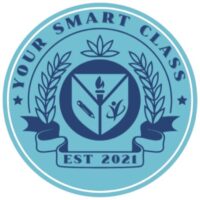Meaning of Curriculum
The term ‘curriculum’ has been derived from a Latin word ‘currere’ which means a ‘race course’ or a runway on which one runs to reach a goal. Accordingly, a curriculum is the instructional and the educative programme by following which the pupils achieved their goals, ideals and aspirations of life.
It is curriculum through which the general aims of a school education receive concrete expression.
Traditional Concept of Curriculum
In the past, the second name of curriculum was ‘course of studies’. This term was considered to be a program related to various subjects only. However, the term ‘curriculum’ and ‘course of studies’ were, sometimes interchangeable but used in a very limited sense. As a matter of fact, this viewpoint was a static-view which emphasised only the textbook knowledge or factual information. In those it was correct because the main objective of education was to help the learner to memorize the contents.
Furthermore, curriculum was a body of preserved factual knowledge to be transmitted from the teacher to the pupils and mastered by them through memorization, recitation and drills; and to be reproduced on the demand of the teacher.
The
traditional curriculum was subject centred while the modern
curriculum is child and life-centred or student centred.
Modern Concept of Curriculum
With the passes of time and reinforcement of mind the traditional concept of curriculum (which was limited in scope) was replaced by a dynamic and modern concept. Hence, it is now considered to be a broad cumulative and comprehensive term including all the curricular and co-curricular activities. It is the totality of all the learning activities to which we are exposed during study, i.e. classroom experiences, laboratory, library, playgrounds, school building, study tours associations withy parents and community. Now, it is more than the textbooks and more than the subject matter selected for a particular class.
Modern
education is the combination of two dynamic processes. The one is the
process of individual development and the other is the process of
socialisation, which is economically known as adjustment with the
social environment.
In short, curriculum is a series of potential experiences, set-up in educational institutions for the reason of disciplining the learners in desirable ways of thinking of the concerned society. It is a path by following which we can reach a specified destination. Furthermore, it is considered to be a series of learning opportunities which are planned and carried out by a teacher and pupils working together.
Characteristics of Curriculum
a. The curriculum is continuously evolving:- It evolved from one period to another, to the present. For a curriculum, to be effective, it must have continuous monitoring and evaluation. Curriculum must adapt its educational activities and services to meet the needs of a modern and dynamic community.
b. It is is based on the needs of the pupils:- A good curriculum reflects the needs of the individual and the society as a whole. The curriculum is in proper shape in order to meet the challenges of time and make education more responsive to the clientele it serves.
c. It is democratically conceived:- A good curriculum is developed through the efforts of a group of individuals from different sectors in the society who are knowledgeable about the interests, needs and resources of the learner and the society as a whole. The curriculum is the product of many minds and energies.
d.The curriculum is the result of a long term effort:- It is a product of long and tedious process. It takes a long period of time in the planning, management,evaluation anddevelopment of a good curriculum.
e. It is a complex of details:- A good curriculum provides the proper instructional equipment and meeting places that are often most conducive to learning. It includes the student-teacher relationship, guidance and counselling program, health services, school and community projects, library and laboratories, and other school related work experiences.
f. It provides for the logical sequence of subject matter:- Learning is developmental. Classes and activities should be planned. A good curriculum provides continuity of experience.
Read more
g. The curriculum complements and cooperates with other programs of the community:- It is responsive to the needs of the community. The school offers its assistance in the improvement and realisation of ongoing programs of the community. There is cooperative effort between the school and the community towards greater productivity.
h. It has educational quality:- Quality education comes through the situation of the individual’s intellectual and creative capacities for social welfare and development. The curriculum helps the learner to become the best that he can possibly be. Its support system is secured to augment existing sources for its efficient and effective implementation.
i. It has administrative flexibility:- A good curriculum must be ready to incorporate changes whenever necessary. The curriculum is open to revision and development to meet the demands of globalization and the digital age.
Definition of Curriculum
1. Cuningham – “Curriculum is a tool in the hands of the artist (teacher) to mould his material (pupils) according to his ideas (aims and objectives) in his studio (school)”.
2. Morroe – “Curriculum includes all those activities which are utilised by the school to attain the aims of education”.
3.Crow and Crow – “The curriculum includes all the learner’s experience in or outside school that are included in a programme which has been devised to help him developmentally, emotionally, socially, spiritually and morally”.
4.T.P. Nunn – “The curriculum should be viewed as various forms of activities that are grand expressions of human spirit and that are of the greatest and most permanent significance to the wide world”.
See More B.Ed. Notes from below
- Action Research
- Critical Analysis of Syllabus and Textbook
- Final Internship Report
- Gender Issues and Concers
- Gender Stereotypes
- Socialisation and Gender bias in Schooling
Discover more from YOUR SMART CLASS
Subscribe to get the latest posts sent to your email.








